Queen Mary and Santa Catalina Island
October 7 - 12, 2012
In 1937, the Cunard Line sent the RMS Queen Mary on her maiden voyage, with New York as its destination. The Queen Mary and the Queen Elizabeth provided year-round scheduled service between New York and South Hampton until Britain declared war in 1939. She was immediately converted to a troop ship, and carried as many as 16,000 troops. As the best way to cross the Atlantic, she carried 1957 people in three different classes, but the troops were not nearly so comfortable; they were hot bunking.After WW2, the Queen Mary was refitted as a trans-Atlantic courier, resuming service in 1947. In 1958, she got stabilizers. Prior to that, the North Atlantic weather provided a really rugged passage. By 1966, jet planes rendered ships like the two Queens irrelevant; the Queen Mary had made 1001 trans-Atlantic passages. The city of Long Beach purchased the Queen Mary, eventually turning it into a floating hotel, stripped of its 27 boilers and all their support.
We visited the Queen Mary, Long Beach and Santa Catalina Island on a trip run by Road Scholar. We had three nights on the Queen Mary and two nights in Avalon on Santa Catalina Island.
Queen Mary
| Seen from the Long Beach waterfront, the Queen Mary looks like a smallish 1020-foot-long cruise ship. | 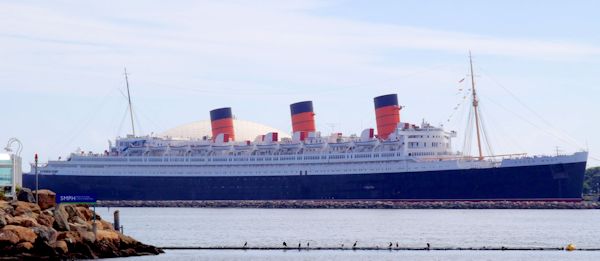 |
| From the parking lot at the Port of Long Beach, the Queen Mary looks much more like a 365-room hotel, or maybe just a tourist attraction. | 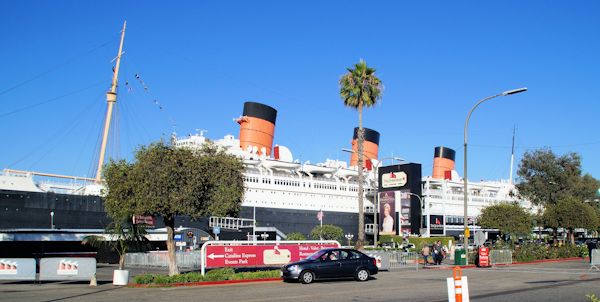 |
| Apart
from the hand rails, this could be any hotel corridor. Hand
rails
were a reaction to sailing through North Atlantic storms with no
stabilizers. Notice that all the walls are wood veneer. That applies to the corridors, to the state rooms, and to all the public rooms. Some 50 or more different woods were used to finish the interiors. |
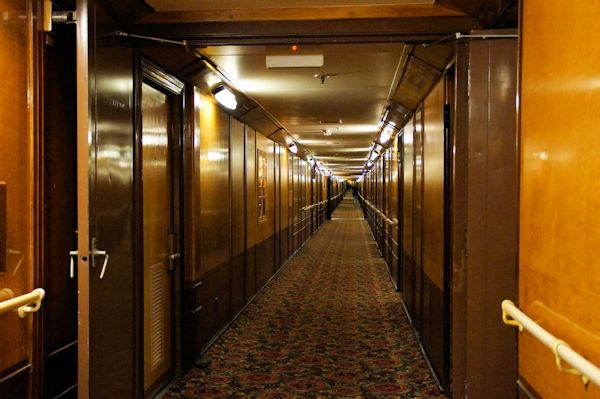 |
| Unlike any other ship we have been on, the Queen Mary gave us a cabin with a king size bed. Actually, only the first class cabins were converted into hotel rooms. The things against the ceiling are the 1937 version of air conditioning, vents and heating actually. The Queen Mary didn't have real air conditioning in the rooms until refitted by Long Beach. | 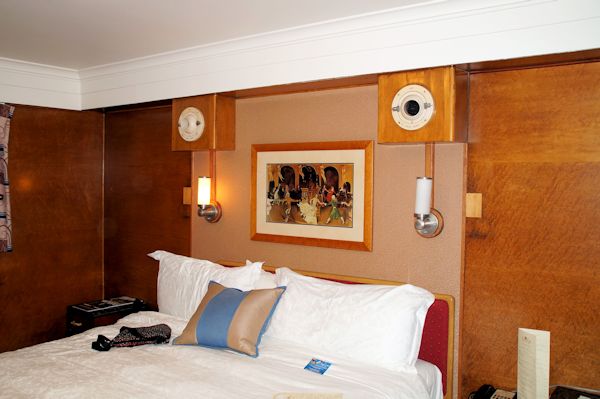 |
| But the windows are not hotel windows. All the cabins in all classes had portholes, because they are more resistant to the North Sea storms. This is not the North Sea, just the Long Beach waterfront. | 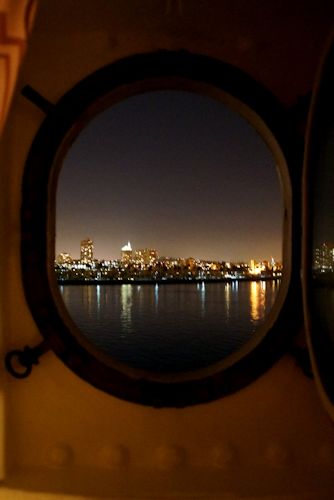 |
| Every trip to and from our cabin took us past this door, and it took us past the Eisenhower suite as well. Actually, as the classiest way to cross the Atlantic, the Queen Mary was used by anybody who was anybody in Hollywood, society or the government. Or out of government; the Duke of Windsor and his wife were frequent travelers. | 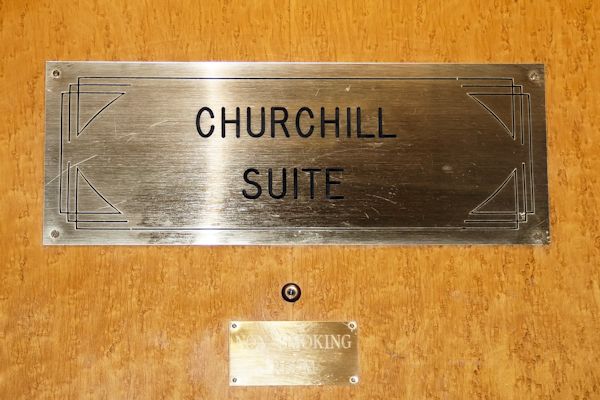 |
| The first class dining room is only used now for special events and very pricey Sunday brunches. With its 30-foot ceilings, this is the largest enclosed space on any ship. The major rooms are all Art Deco masterpieces, besides being show pieces for dozens of types of wood veneer. | 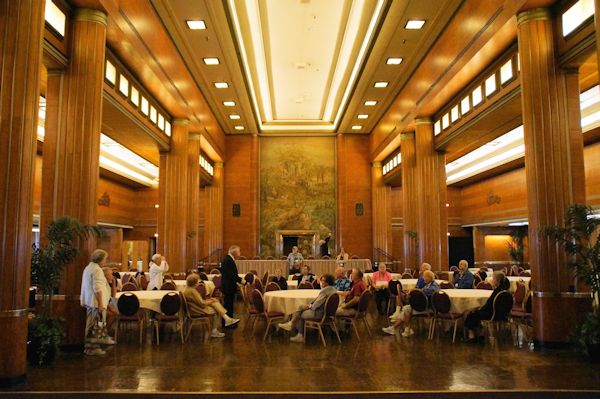 |
| The Grand Salon is also available for weddings and other festive events. Still Art Deco. | 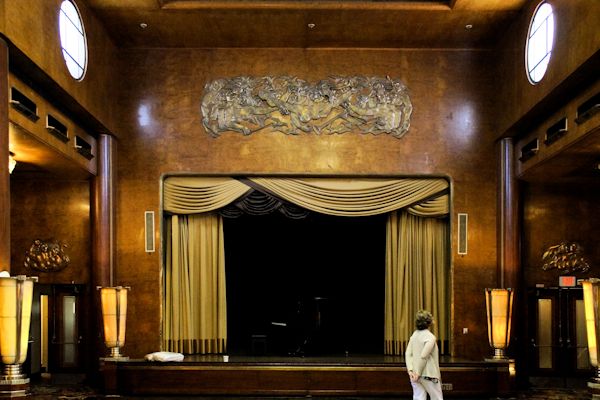 |
| The Observation Bar, just beneath the bridge, carries out the Art Deco theme with a mural "The Royal Jubilee Week, 1935" over the bar. The gray headed gentleman was our tour guide, a retired Princess line captain who lives on sailboat in the Long Beach Marina. This was originally the first class lounge. | 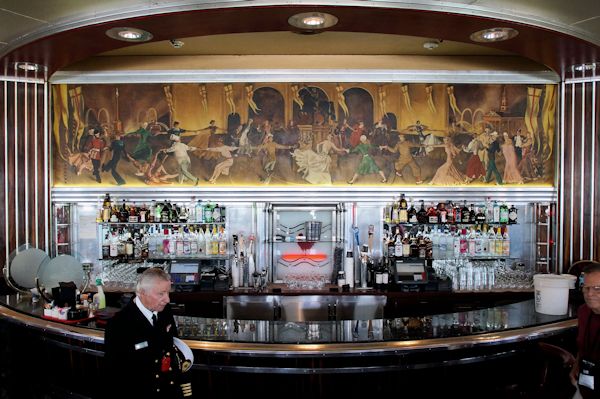 |
| From the Sports Deck, the three funnels loom overhead. The radio room is just to the left. | 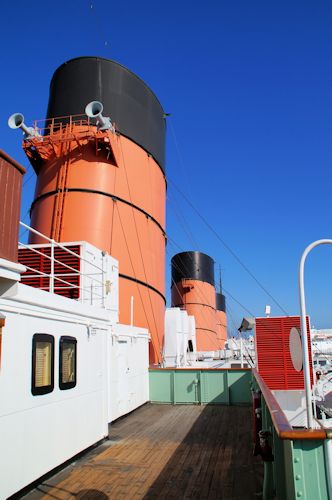 |
| Looking across the stern of the Queen Mary, we see the Carnival Inspiration, launched in 1996. This ship is smaller than the Queen Mary, but it carries about 600 more passengers. The Queen Mary is too wide to go through the Panama Canal. Carnival has a busy terminal in Long Beach, using the original home of the Spruce Goose. | 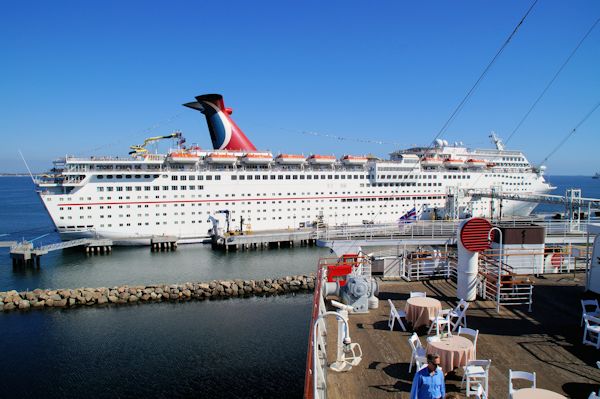 |
| On the bow, we see an addition for the tourists. This is an anti-aircraft gun like those the Queen carried during WW2. She was fast enough to out-run the submarines, though. Behind the gun, you can see the windows of the Observation Bar, and above the bar you see the bridge. | 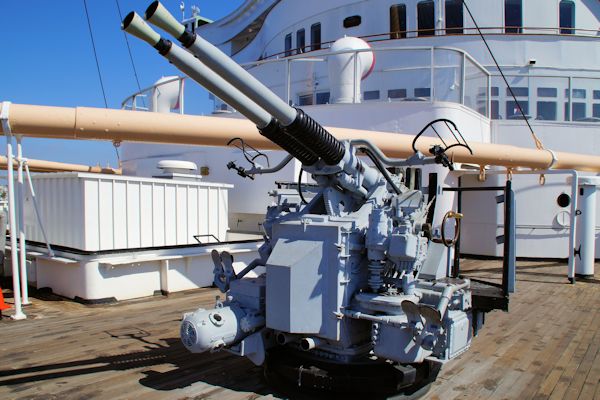 |
| The bridge of the Queen Mary is nothing like that on the contemporary cruise ships. Lots of brass, with wheels for steering, telegraphs for communicating with the engine room. Also, just above the binnacle, there are multiple speaking tubes. | 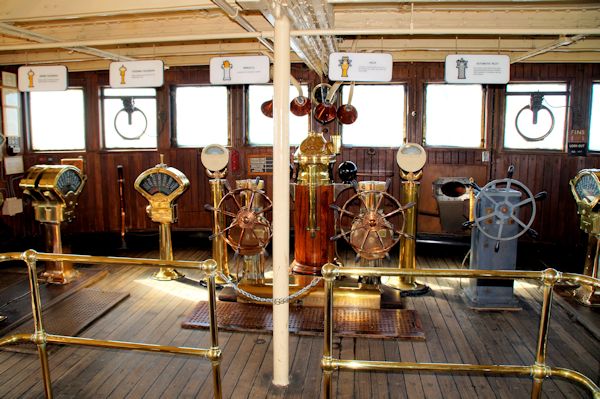 |
| At the other end of the ship's telegraphs, we have one of two engine rooms. Notice the inclinometer to indicate how much the ship is rolling. Lots of valves and gages. | 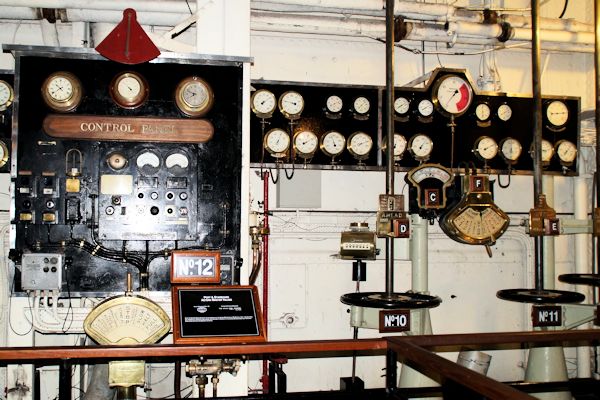 |
| The red housing covers one of four 40,000 horsepower steam turbines. Those turbines made it possible for the Queen Mary to hold the trans-Atlantic speed record for decades. Just aft of the turbines are gear boxes. | 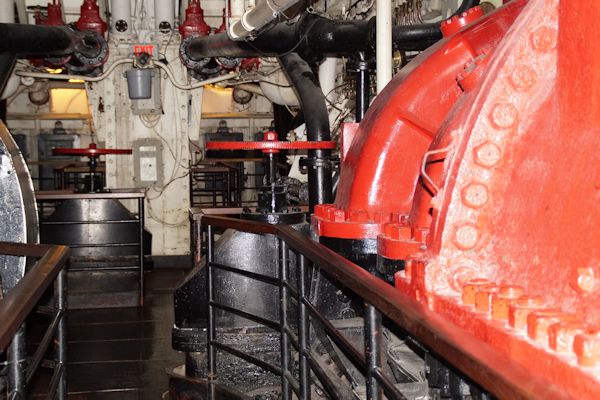 |
| From each of the gear boxes there emerges a drive shaft, about 18 inches in diameter. | 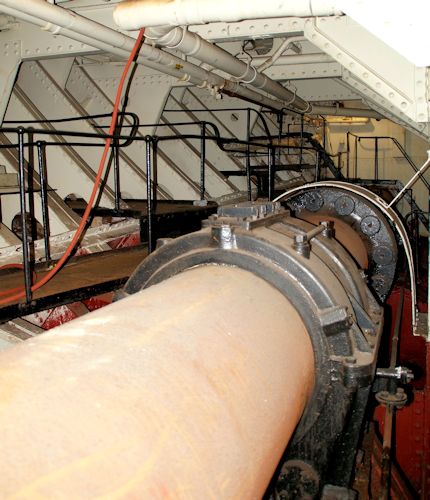 |
| At the end of each drive shaft there is a single propeller. One of the four has been preserved, and it is visible, looking down into the water. This weighs 35 tons, and it is 20 feet across. | 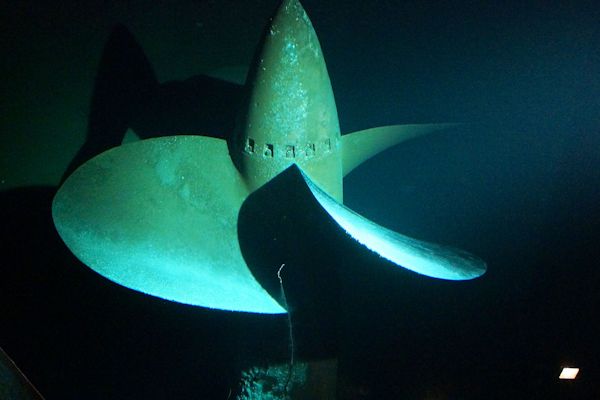 |
Long Beach
| Of course, you saw the view of the Long Beach waterfront from our porthole. From the deck, the night view is very impressive. | 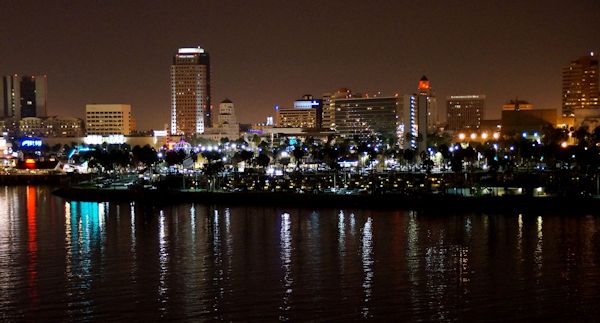 |
| By day you can see Shoreline Village, a waterfront dining and entertainment area, as well as the major skyscrapers a block or two back from the water. | 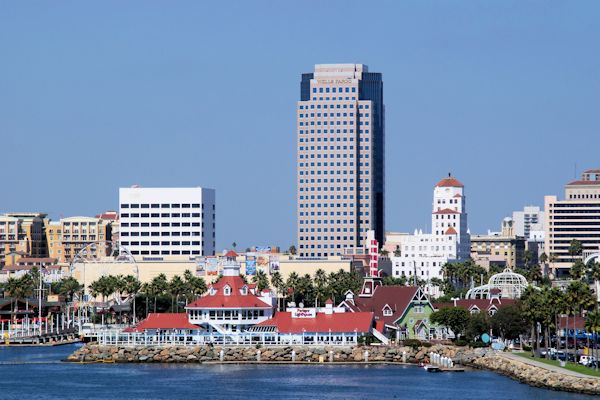 |
| In the foreground, Long Beach's Shoreline Marina, and the green roof marks the Villa Riviera, which was the second tallest building in Southern California (after the Los Angeles City Hall) until the 1950's. It was completed in 1929 with the intention of providing luxury residences. Bad timing! However, that is what it is now, condominiums. | 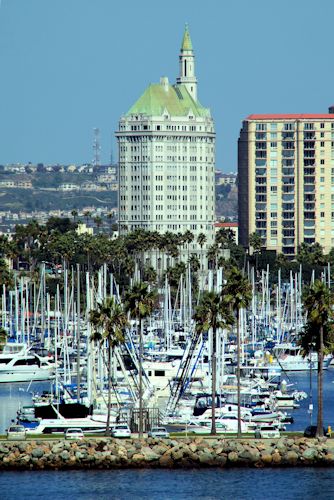 |
| Of course, the Queen Mary is docked in the Long Beach seaport, the second busiest in the United States. It abuts the Port of Los Angeles (San Pedro), and together they combine to be the busiest in the country. | 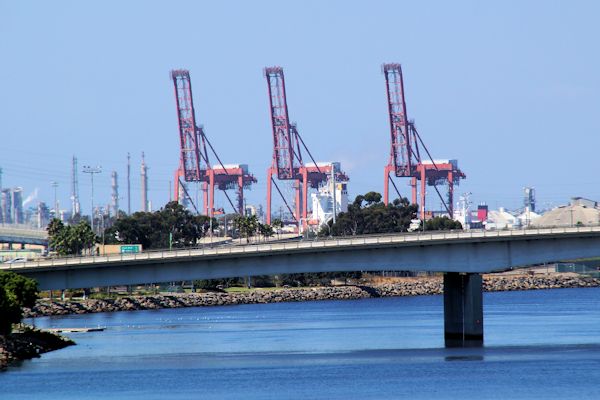 |
Santa Catalina Island
| Speedy catamarans make the trip from Long Beach to Santa Catalina Island in about an hour. | 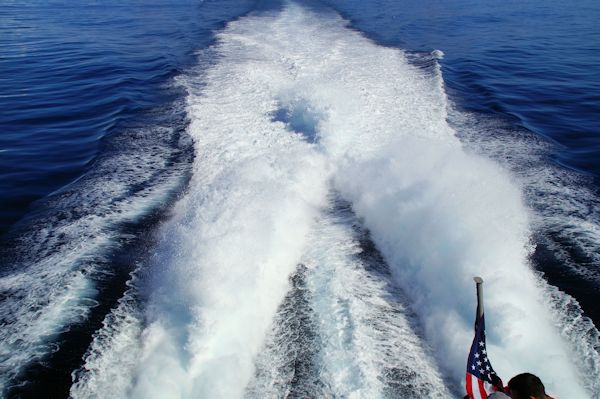 |
| Avalon is Santa Catalina's major population center, and the harbor is the center of Avalon. The permanent population is about 3750. The rest of the island has about 250 people, and probably about the same number of buffalo. | 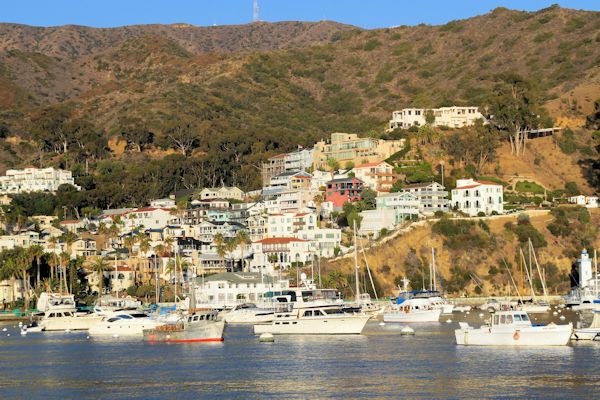 |
| Another view of the harbor, and notice the house at the upper left hand corner. It was once occupied by William Wrigley, Jr. Wrigley bought virtually all the island in 1919, and he proceeded to develop, promote and preserve the island. | 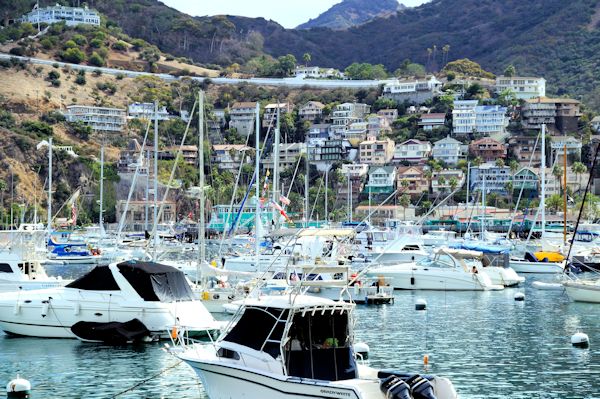 |
| Wrigley and his wife Ada used this home. 350 feet above the harbor, when they were not in their mansions in Chicago, Lake Geneva, Phoenix or Pasadena. (Lots of money in Juicy Fruit and Spearmint.) Now it is a B & B, The Inn on Mt. Ada, at $400 to $800 a night. | 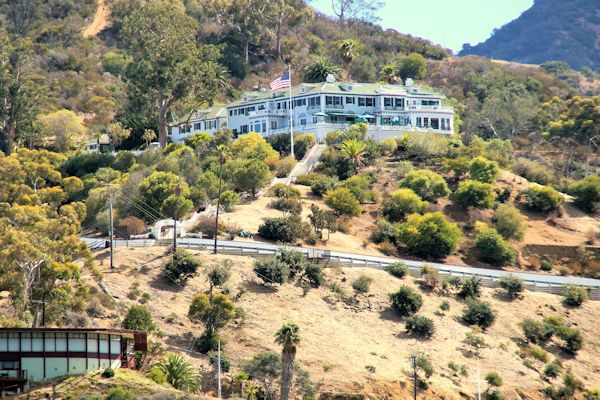 |
| As a way to build up the tourism, Wrigley built the Catalina Casino, and opened it in 1929. The building has two major components, the Avalon Theater below and the Avalon Ballroom above. | 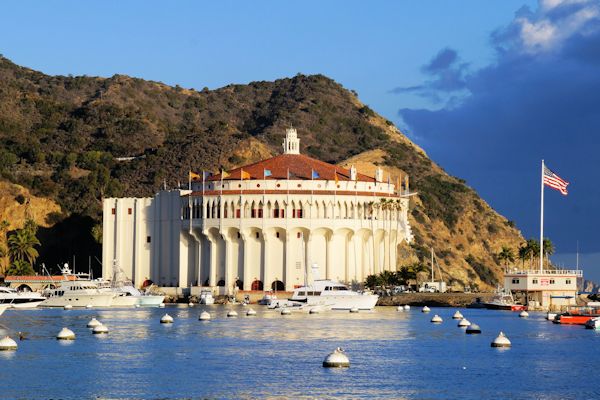 |
| Above the box office, clearly Art Deco, is a huge mermaid mural. | 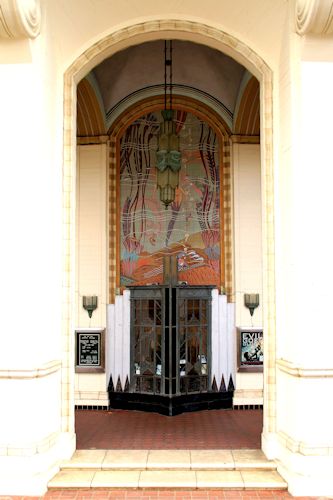 |
| The theater was on of the first to be constructed specifically to support the new "talkies," but there is a theater organ just in case. | 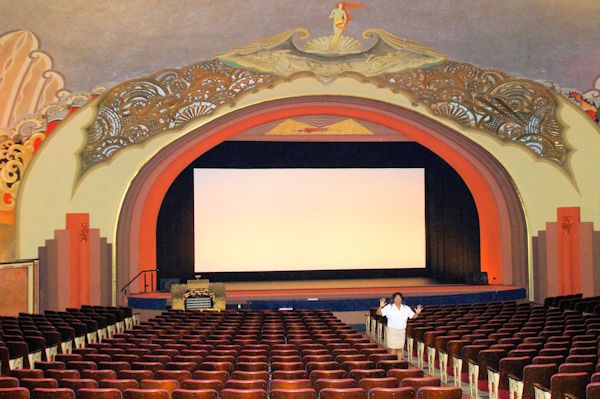 |
| When we were there, the 180-foot diameter ballroom was fixed up for the jazz festival on the following day, and it was not very photogenic. The combination of lights and ventilation fan occupy the top center of the ballroom. There is a 12-foot exhaust fan hidden behind all the decoration. From 1934 until the 1950's CBS broadcast all the Big Bands live from the Avalon Ballroom. | 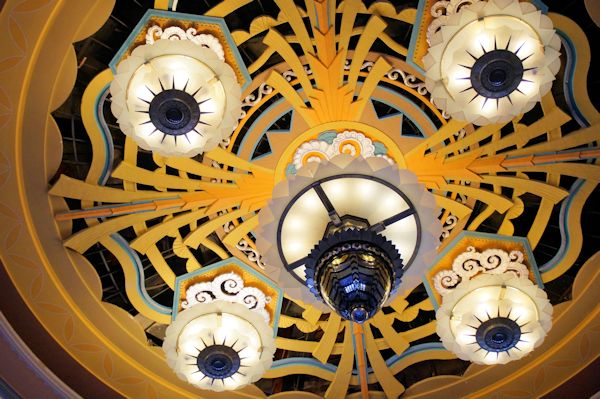 |
| Hotel St. Lauren was our abode in Avalon. This place is bed only, no breakfast. See the umbrella on top; there is an open patio up there. | 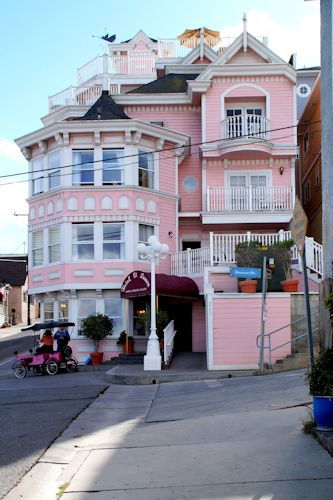 |
| This is the view from that patio. Avalon Community Church in the foreground is the oldest in Avalon, dating to the 1890's. Against the horizon we see the Sapphire Princess. | 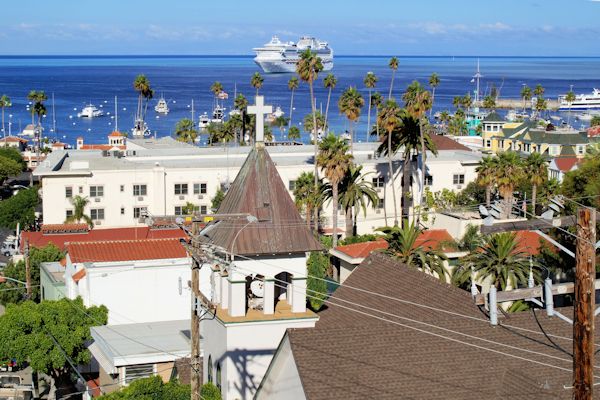 |
| The most common vehicle on Santa Catalina Island is the gas powered golf cart. This is a fancy example, modeled on a 1901 Ford and owned by the hotel. | 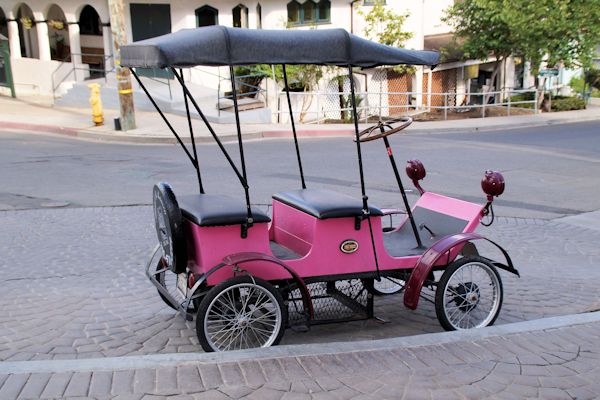 |
| This Chime Tower was built by Ada Wrigley in 1925, and it rings out the hours and quarter hours from 8 AM to 8 PM, sounding a lot like Big Ben. | 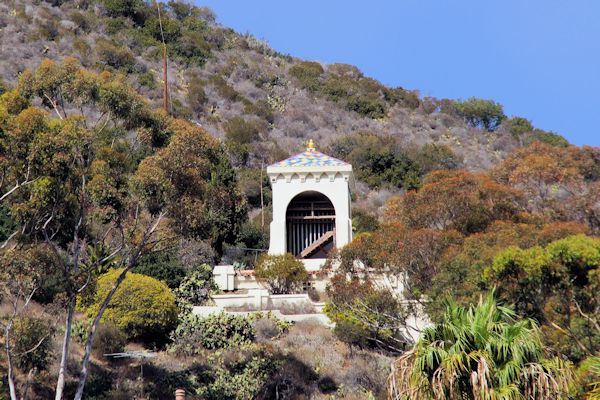 |
| When William Wrigley, Jr. died in 1932, his body was moved from Phoenix to this tower at the head of a long canyon. The canyon is home to the Wrigley Botanical Gardens. Wrigley was here from about 1934 until 1942, when he was moved to Glendale, CA. During WW2, Catalina Island was used for military training. | 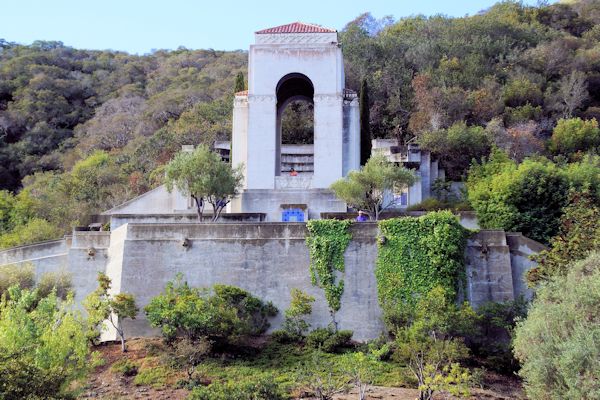 |
| In 1927, Wrigley started the Catalina Clay Products Tile and Pottery Plant first to support the Casino construction, and subsequently to produce tile and pottery for more general use. This niche is part of the Wrigley Memorial Tower. | 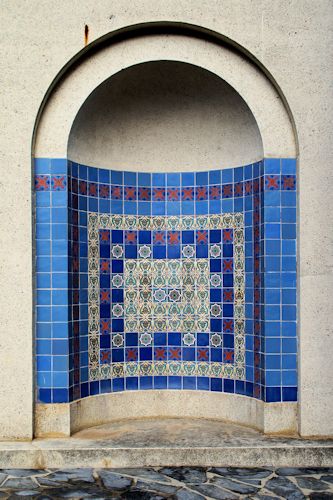 |
| This is a close-up of the tiles above. | 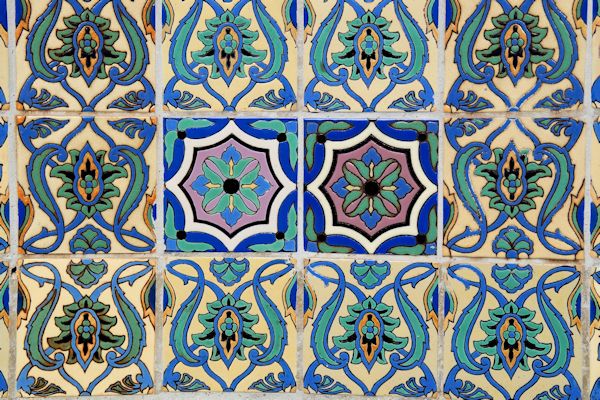 |
| This tiled fountain sits near the center of downtown Avalon. | 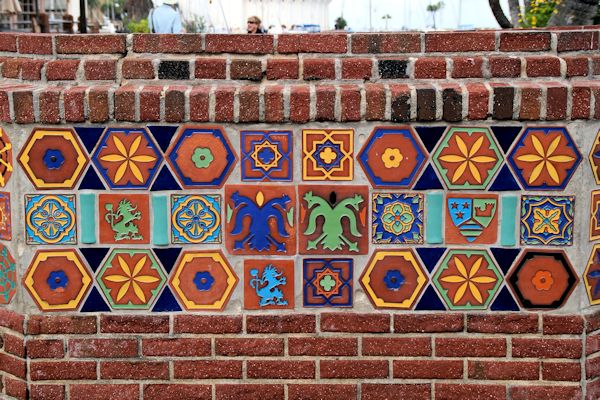 |
| Early in its tourist life, Avalon and Santa Catalina Island were served by seaplanes, memorialized here in tile on the path to the Casino. | 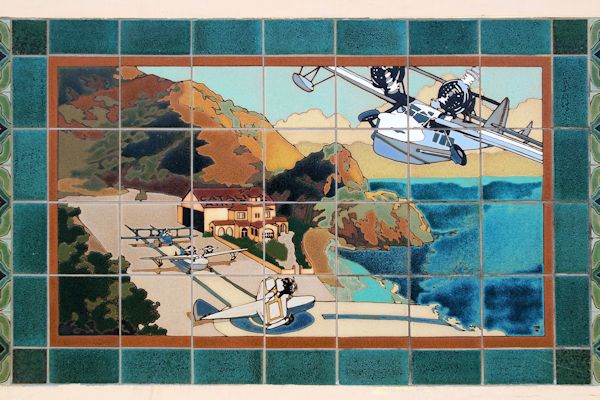 |